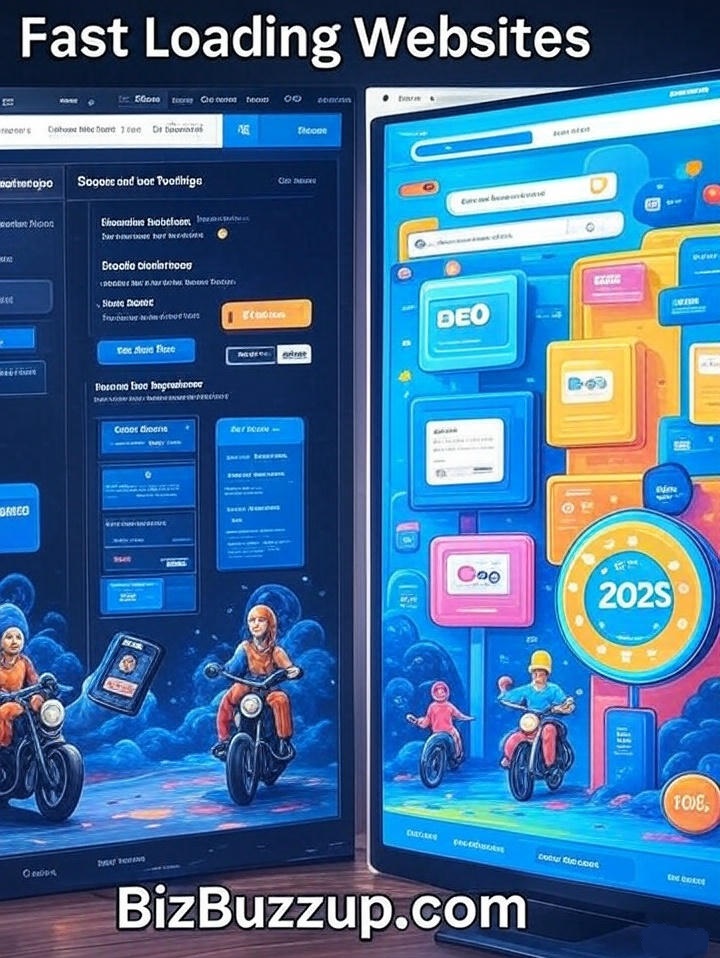
Understanding Local SEO
What Is Local SEO?
Local SEO, or Local Search Engine Optimization, is a vital digital marketing strategy designed to improve a business’s online visibility within a specific geographic area. Unlike traditional SEO, which targets a global audience, local SEO focuses on connecting your business with customers in your immediate vicinity. This approach is especially beneficial for small and medium-sized businesses that rely on foot traffic or local clientele.
By targeting users searching with geographic intent such as “restaurants near me” or “plumber in Chicago”—businesses can position themselves right when and where potential customers are looking.
Understanding Search Intent in Local SEO
One of the most important aspects of local SEO is understanding search intent. This refers to the reason behind a user’s query. When someone searches for services or products and includes a location term or uses “near me,” it signals a high level of intent to act quickly.
For example, a person searching “best pizza near downtown Denver” is likely looking to make a purchase soon. Optimizing your website and content to match these location-based queries increases your chances of appearing in top search results and Google’s Local Pack.
Effective use of search intent helps your business appear to people who are ready to engage with your products or services now—not later.
Optimizing for Location Relevance
Location relevance is another cornerstone of local SEO. This involves making sure search engines understand exactly where your business is located and what local area it serves. To achieve this:
-
Claim and optimize your Google My Business (GMB) listing.
-
Ensure consistent business information (name, address, phone number) across all online directories.
-
Update business hours, services, and photos regularly.
-
Encourage customers to leave detailed reviews.
These actions signal to search engines that your business is trustworthy, active, and relevant to a specific geographic area.
Other important platforms include Yelp, Bing Places, and Apple Maps. Ensuring you have a strong presence across these platforms can further increase visibility in local searches.
Building Local Trust Through Reviews and Citations
Customer reviews play a major role in influencing buying decisions and improving your local SEO performance. Businesses with positive reviews on GMB and Yelp not only rank better but also appear more credible to new customers.
Encourage satisfied customers to leave reviews and always respond to both positive and negative feedback in a timely, professional manner. This demonstrates responsiveness and builds trust.
Citations are another critical factor. A citation is any online mention of your business’s name, address, and phone number (NAP). Ensuring your NAP details are consistent across various directories and platforms can significantly improve your local search rankings.
Leveraging Local Backlinks for Greater Authority
Local backlinks are links from websites within your geographic area that point back to your own. These can come from local blogs, newspapers, chambers of commerce, or community partners. Not only do backlinks boost your site’s domain authority, but they also reinforce your relevance in the local context.
Ways to build local backlinks include:
-
Partnering with other businesses for local events.
-
Contributing guest posts to local blogs or media outlets.
-
Sponsoring community initiatives or nonprofit events.
These links signal to Google that your business is a credible and established member of the local ecosystem.
Mobile Optimization and Voice Search for Local SEO
With the increasing use of smartphones and voice search, optimizing for mobile and conversational queries is essential. More than half of all local searches are done via mobile, and many users ask questions like, “Where can I find a nearby bakery?”
Ensure your website is:
-
Mobile-friendly and fast-loading
-
Includes FAQ sections to answer common voice search questions
-
Uses structured data to help Google understand your content
These adjustments improve usability and help you capture more traffic from mobile and voice searches.
Why Local SEO Matters More Than Ever
Local SEO is no longer just an optional strategy it’s a competitive necessity. For businesses that serve a physical community or region, local SEO delivers measurable results, including higher rankings, more calls, and increased in-store visits.
By focusing on search intent, optimizing for location relevance, collecting quality reviews, earning local backlinks, and improving mobile experience, your business can dominate the local digital space.
As online search habits continue to evolve, local SEO will remain a critical way to connect with high-intent customers right when they need your product or service.
The Importance of Google My Business
Why Google My Business Is Critical for Local SEO Success
Google My Business (GMB) isn’t just another online listing—it’s a central hub for your local presence on Google. Whether you’re running a small café, a boutique agency, or a growing dental clinic, having an optimized GMB profile is a game-changer for attracting customers in your area.
Local SEO has become essential in the digital age, and GMB is one of its most powerful tools. It connects your business with people nearby who are actively searching for services like yours. Appearing in local search results and Google Maps increases the chances of being discovered at the right time by the right audience.
Getting Started With Google My Business
Setting up a Google My Business profile is a relatively simple but highly impactful step. Once you claim your business, you’ll input essential information including:
-
Business Name
-
Physical Address
-
Phone Number
-
Website URL
-
Operating Hours
-
Categories & Services
This data is used by Google to display your business accurately in local search results. More importantly, it helps potential customers determine if your business meets their immediate needs.
For example, when someone searches “best Thai restaurant near me,” GMB listings provide results that are both geographically relevant and information-rich—exactly what today’s consumers expect.
Why Accuracy Matters in GMB Listings
Consistency in your business information across the web is crucial. Google and your customers rely on accurate data to build trust. A wrong phone number or mismatched hours can frustrate users and hurt your credibility.
Keep in mind:
-
Ensure your NAP (Name, Address, Phone) is consistent everywhere.
-
Update holiday hours or temporary changes regularly.
-
Add photos of your business to increase authenticity.
Inaccurate listings not only confuse customers but can also lower your ranking in Google’s local pack. Consistency and clarity give search engines the confidence to recommend your business to users.
Customer Trust Starts With Your Profile
Today’s consumer doesn’t just want to find a business—they want to trust it. An up-to-date and complete GMB profile signals reliability. Users are far more likely to click on listings with comprehensive information, images, positive reviews, and active management.
Trust is built through transparency:
-
Upload clear, recent images of your storefront, interior, and products.
-
Respond to reviews—thank people for positive feedback and politely address concerns.
-
Use GMB posts to share timely updates, promotions, or events.
This kind of engagement not only helps you stand out but also improves your position in local search rankings.
Leveraging GMB Features to Boost Local SEO
Beyond the basics, Google My Business offers several dynamic features that can help you stand out from competitors and boost engagement.
Here’s how to use them strategically:
✅ Posts: Like mini-ads, posts allow you to highlight offers, events, and announcements. Google favors active profiles, and consistent posting signals that your business is open and involved.
✅ Q&A Section: Anticipate and answer common questions about your services, pricing, or parking availability. Think of it as a searchable FAQ that builds confidence in potential customers.
✅ Booking and Messaging: Some businesses can enable direct booking from GMB or allow customers to message them instantly. It’s all about reducing friction and making customer interactions as smooth as possible.
✅ Insights: The analytics section of GMB provides valuable data—how people found you, what keywords they used, and how many called or clicked. Use this information to fine-tune your local SEO strategy.
GMB Reviews: A Local SEO Powerhouse
Reviews are arguably one of the most influential parts of your GMB profile. They serve as digital word-of-mouth and directly impact both customer perception and search ranking.
🔹 Ask satisfied clients to leave a review.
🔹 Respond to all reviews professionally.
🔹 Report fake or inappropriate reviews to maintain quality.
Businesses with a steady stream of authentic, positive reviews are not only more trusted—they also rank higher in local searches. A strong review profile is a critical trust signal for new customers.
Photos and Videos: Visual Content That Converts
Images help potential customers imagine themselves interacting with your business. According to Google, businesses with photos receive 42% more requests for directions and 35% more click-throughs to their websites.
What to upload:
-
Storefront (so people can find you easily)
-
Interior shots (ambiance matters!)
-
Product close-ups
-
Team pictures (for a human touch)
Regularly updating your media content tells Google—and your customers—that your business is active, reliable, and worth visiting.
GMB and Mobile Search: Meeting Customers Where They Are
With mobile search dominating local queries, your GMB profile is often the first touchpoint for mobile users. They’re not just browsing—they’re ready to take action.
Optimize your profile for mobile by:
-
Keeping business hours accurate.
-
Using bullet points in posts for easy reading.
-
Making sure call and direction buttons are clickable and visible.
Voice search also ties in here. Users might ask, “Where can I get a haircut nearby?” and GMB results provide the answer instantly.
Your GMB Profile Is a Living Asset
Don’t treat GMB as a one-and-done listing. It’s a dynamic platform that should evolve as your business grows. Regular updates, engagement, and optimization are key to staying ahead of local competitors.
Many businesses that neglect their GMB profile lose out on customers simply because they appear inactive or unreliable. On the flip side, those who consistently update their profiles see steady growth in local visibility and engagement.
Leveraging Local Keywords
Mastering Local SEO with Strategic Use of Local Keywords
In today’s competitive digital landscape, understanding how to use local keywords effectively can give your business a significant edge. Local SEO is no longer optional—it’s essential. If your goal is to appear in local search results and attract customers nearby, leveraging local keywords is one of the most important tactics in your SEO toolbox.
Let’s explore how you can research, implement, and optimize your local keyword strategy to increase visibility and drive more targeted traffic.
Understanding Local Keywords: What They Are and Why They Matter
Local keywords are search terms that include a geographic location alongside a specific product, service, or business type. Think “plumber in Miami” or “vegan café San Diego.” These keywords connect your business to people who are actively looking for services in a particular area.
Why are they important? Because they reflect search intent. When someone adds a location to their query, they’re usually ready to make a purchase or visit a store. That’s where your optimized content comes into play—showing up at the right place and time.
Example of local keywords:
-
“best pizza in Brooklyn”
-
“emergency dentist in Dallas”
-
“Los Angeles personal injury lawyer”
Businesses that ignore this aspect of SEO miss out on high-converting traffic.
How to Conduct Local Keyword Research
Keyword research is the first step in building a solid local SEO strategy. There are several tools and techniques that can help you uncover the right local keywords for your niche.
1. Use SEO Tools for Data-Driven Insights
Platforms like Google Keyword Planner, Ahrefs, SEMrush, and Ubersuggest offer deep insights into:
-
Monthly search volume
-
Keyword difficulty
-
Related search terms
-
Competitor analysis
Start by entering a core keyword (like “bakery”) and then filter by location or append your city manually to uncover opportunities.
2. Think Like Your Customer
Put yourself in the shoes of someone searching for your services locally. What would they type into Google? Try combinations of:
-
[Service/Product] + [City/Neighborhood]
-
“Near me” keywords (e.g., “nail salon near me”)
-
Location-specific phrases like landmarks, zip codes, or districts
Understanding these behaviors helps you align your content with what people are actually searching for.
Implementing Local Keywords into Your Website
Once you’ve identified your keywords, the next step is to integrate them naturally throughout your site. Here’s how:
1. On-Page SEO Optimization
Incorporate your local keywords in the following places:
-
Title tags and meta descriptions
-
Page URLs
-
H1, H2 headers
-
Image alt text
-
Body content (paragraphs and bullet points)
Example:
Instead of a generic title like “About Us”, try “About Our Landscaping Services in Portland, OR.”
2. Create Localized Landing Pages
If your business serves multiple areas, consider creating individual pages for each city or neighborhood. Each page should:
-
Focus on a specific local keyword
-
Include unique content
-
Feature local testimonials or imagery
This approach increases your chances of ranking in location-based search queries across different geographic areas.
Going Beyond Basics: Audience Insights & Competitor Research
Local keyword strategy isn’t just about volume—it’s about relevance and intent. To fine-tune your efforts:
1. Use Google Search Console and Analytics
Monitor which queries are driving traffic and where your visitors are coming from. You might discover local phrases you hadn’t considered.
2. Spy on the Competition
Check the top-ranking local competitors. What keywords are they targeting? What topics are they covering? Tools like Ahrefs or Moz can provide competitor keyword profiles, helping you identify gaps and opportunities.
3. Understand Local Language Nuances
Some locations have specific lingo. For example, people might search “sub” in one city and “hoagie” in another. Adapt your content based on how locals speak and search.
Voice Search and “Near Me” Trends
More users than ever are turning to voice search when looking for local businesses. Phrases like “Where can I get sushi near me?” or “closest vet open now” are becoming the norm.
To adapt:
-
Optimize for conversational keywords.
-
Add FAQ sections that mimic spoken questions.
-
Include phrases like “near me” and natural-sounding queries in your content.
Google understands these phrases as indicators of local intent, and optimizing for them gives your business a better chance of appearing in voice-based results.
Local SEO in 2025 and Beyond: It Starts with Keywords
The importance of local keywords continues to grow as more consumers rely on search engines to find businesses in their area. With competition intensifying in almost every industry, those who focus on smart keyword usage will stand out.
-
Make local keyword research a continuous process.
-
Adapt your content to match local search behavior.
-
Update your pages regularly to stay relevant.
Building Local Citations and Backlinks
To succeed in local SEO, one of the most powerful strategies a business can implement is building high-quality citations and backlinks. These two elements serve as the foundation for improving local visibility and gaining a stronger foothold in search engine rankings.
Let’s break down what they are, why they matter, and how to use them effectively.
Understanding Citations and Backlinks
Citations are mentions of your business’s name, address, and phone number (NAP) across the web. These often appear on local directories, social media platforms, review websites, and data aggregators. A consistent presence in these places reinforces your business’s legitimacy and makes it easier for search engines to verify your location and service area.
Backlinks, on the other hand, are incoming links from other websites to yours. When reputable websites link back to your content, it acts as a signal to search engines that your site is trustworthy and authoritative.
Together, citations and backlinks help improve your position in local search engine results pages (SERPs), making it easier for potential customers in your area to find you.
The Power of Local Citations
Citations play a crucial role in establishing your business’s online identity. Google and other search engines use them to cross-check your NAP details, ensuring consistency and trustworthiness.
Why accurate citations matter:
-
They enhance your business credibility.
-
They prevent customer confusion due to conflicting information.
-
They increase your chances of appearing in Google’s Local Pack.
How to Build Effective Citations:
-
Start with Google My Business and ensure your profile is 100% complete.
-
Submit your business to major directories like Yelp, Bing Places, Apple Maps, and Yellow Pages.
-
Use local directories relevant to your industry or city.
-
Keep your NAP details exactly the same across all platforms.
Pro tip: Use tools like Moz Local or BrightLocal to scan, track, and clean up inconsistent citations across the web.
Building Backlinks That Boost Local SEO
Unlike citations, backlinks are more than just references—they’re endorsements. When a local newspaper, blog, or organization links to your site, it signals trust to search engines and potential customers.
Benefits of local backlinks:
-
Boost domain authority
-
Improve local rankings
-
Drive referral traffic
-
Strengthen online reputation
Smart Ways to Earn Local Backlinks:
-
Collaborate with Local Partners
Partner with other local businesses or influencers to host events, webinars, or cross-promotions. This often leads to backlinks from their websites or social pages. -
Sponsor Community Events or Charities
Sponsoring local festivals, sports teams, or non-profits often results in mentions and links from their official websites—valuable and relevant backlinks. -
Engage with Local Media
Reach out to local journalists or bloggers to feature your business in articles, press releases, or business spotlight pieces. -
Guest Blogging and Networking
Offer to write guest posts for local blogs or industry-specific publications. These opportunities let you share your expertise and earn quality backlinks.
Avoid Common Mistakes
-
Inconsistent NAP Information: Even small typos can hurt your rankings.
-
Low-Quality or Spammy Backlinks: Focus on relevant, trusted local sources.
-
Neglecting Ongoing Efforts: Citation management and link-building are not one-time tasks—stay active and current.
Citations and Backlinks: A Powerful Local SEO Duo
As search engines grow smarter, local SEO is becoming more refined. What remains constant is the value of citations and backlinks in establishing credibility and authority. These two strategies are not just technical tasks—they’re about building relationships, maintaining accuracy, and creating content that others want to reference.
The Role of Online Reviews and Reputation Management
In today’s digital landscape, online reviews for local SEO have become a powerful factor that directly affects both search engine rankings and consumer trust. Whether on Google My Business, Yelp, or social media platforms, these reviews shape how your business is perceived online and influence customer decisions at a local level.
To succeed in your local SEO strategy, understanding how to encourage, manage, and respond to reviews is essential.
Why Online Reviews Matter for Local SEO
Search engines like Google consider online reviews as a strong signal of a business’s relevance, quality, and reliability. Businesses that consistently receive high ratings and recent positive reviews often rank higher in local search results.
Key benefits of online reviews:
-
Improve local visibility on Google Maps and Search
-
Build credibility and social proof
-
Influence purchase decisions
-
Increase click-through rates in search listings
Did you know?
According to a BrightLocal study, 87% of consumers read online reviews for local businesses, and 73% only engage with businesses that have 4 stars or higher.
Strategies to Encourage Positive Reviews
Building a consistent flow of positive online reviews is a proactive effort that starts with delivering great customer service and continues through follow-up strategies.
1. Make It Easy and Accessible
Encourage reviews by:
-
Sending post-purchase follow-up emails with direct review links
-
Creating QR codes for in-store feedback
-
Embedding Google review links on your website
2. Offer Gentle Incentives
While incentivizing reviews must be done ethically and within platform guidelines, offering small tokens of appreciation or entries into a giveaway can motivate satisfied customers to share their experiences.
Pro Tip: Add a brief note to your email signature:
“Loved our service? Leave us a quick review on Google – it helps us grow!”
Managing Negative Reviews With Grace
Negative reviews are inevitable, but how a business handles them can either harm or enhance its reputation.
1. Respond Promptly and Professionally
Show empathy and acknowledge the issue. Offering a resolution publicly, and continuing the conversation privately, signals to potential customers that you care.
2. Use Negative Feedback to Improve
Each complaint is an opportunity to strengthen your services. Track recurring complaints and identify areas of improvement to reduce future issues.
Example response:
“We’re sorry to hear about your experience and truly appreciate your feedback. We’ve addressed this with our team and would love the chance to make things right. Please reach out to us directly.”
Creating a Review Management System
A systematic approach ensures that you consistently stay on top of your reputation and customer feedback.
1. Identify Relevant Platforms
Focus your efforts on platforms your target audience frequently uses, such as:
-
Google My Business
-
Yelp
-
Facebook
-
Industry-specific directories
2. Use Tools for Monitoring
Employ tools like:
-
Google Alerts
-
Reputation.com
-
Birdeye or Yext
These help automate notifications and track sentiment trends over time.
3. Set Review Response Guidelines
Train your team or designate a manager to:
-
Respond to all new reviews within 24–48 hours
-
Use a respectful, friendly tone
-
Acknowledge both praise and complaints
Final Thoughts: Let Your Reviews Speak for You
Incorporating online reviews for local SEO isn’t just about rankings—it’s about building genuine relationships with your community. Every customer interaction is a potential review, and every review is a chance to improve visibility, trust, and conversions.
By cultivating a positive review culture and taking an active role in reputation management, your business can stand out in a competitive local marketplace.
Mobile Optimization for Local Searches
mobile optimization for local SEO has become a fundamental component of a successful online presence. As mobile usage continues to dominate local search behavior, businesses must prioritize delivering seamless mobile experiences to attract and retain local customers.
More than 50% of local searches are now performed on mobile devices, making mobile optimization no longer optional but essential for improving local visibility and user engagement.
The Role of Responsive Design in Mobile Optimization
Responsive web design is the cornerstone of mobile-friendly websites. It ensures that your site adapts fluidly across all device sizes—from smartphones to tablets—delivering a consistent and intuitive browsing experience.
Why Responsive Design Matters:
-
Enhances user satisfaction by maintaining design integrity across screens
-
Reduces bounce rates and encourages longer site visits
-
Boosts rankings in search engine results pages (SERPs), especially for local searches
Quick Tip: Google prioritizes mobile-first indexing. If your site isn’t optimized for mobile, your search rankings—especially in local results—could suffer significantly.
Website Speed: A Key Ranking and Retention Factor
Speed is more than a technical metric—it’s a user experience essential. Studies show that users abandon websites that take more than 3 seconds to load. A slow site frustrates users and negatively impacts SEO performance.
How to Improve Mobile Site Speed:
-
Compress and properly format images (use WebP for better performance)
-
Minify CSS, JavaScript, and HTML files
-
Implement lazy loading and leverage browser caching
-
Use tools like Google PageSpeed Insights to monitor performance
Pro Tip: A 1-second delay in page load time can reduce conversions by up to 7%. Fast-loading sites rank better and keep customers engaged.
Voice Search Optimization: The Next Local SEO Frontier
As the use of virtual assistants like Siri, Alexa, and Google Assistant rises, voice search is becoming integral to local SEO strategies. People often use conversational phrases and complete questions when speaking, which differ from typed queries.
How to Optimize for Voice Search:
-
Focus on long-tail keywords and natural language queries (e.g., “best pizza place near me”)
-
Create FAQ pages to answer common local questions
-
Use schema markup to provide clear and structured data to search engines
Voice search users typically look for immediate, local answers—businesses that optimize accordingly are more likely to appear in “featured snippets” or voice search results.
Mobile Optimization Best Practices for Local SEO
To fully leverage mobile traffic and improve local rankings, businesses should follow a comprehensive mobile SEO checklist:
-
Ensure your site is responsive and mobile-friendly
-
Speed up load times with technical optimizations
-
Test your mobile site regularly with Google’s Mobile-Friendly Test
-
Use geo-targeted keywords and integrate location pages
-
Structure data with local business schema
-
Simplify navigation and CTA buttons for mobile users
Utilizing Social Media for Local Engagement
Leveraging social media for local SEO has become an indispensable strategy for businesses aiming to enhance their online visibility. Platforms like Facebook, Instagram, X (formerly Twitter), and even TikTok provide unique opportunities for local engagement that directly influence search engine rankings.
Local businesses that actively engage their communities on social media build brand loyalty, foster trust, and improve their chances of appearing in local search results.
Sharing Localized Content to Connect with the Community
One of the most effective tactics in social media strategy is posting localized content. This could include updates on local events, collaborations with nearby businesses, or participation in community initiatives.
How Local Content Helps:
-
Builds relevance for local audiences
-
Encourages local followers to engage, share, and comment
-
Sends strong location signals to search engines
Tip: Use geotags in posts to increase visibility among local users and enhance your chances of appearing in local search feeds.
Using Paid Social Ads to Target Local Audiences
Paid social media advertising allows businesses to reach very specific local demographics. Platforms such as Facebook and Instagram offer precise geolocation targeting, enabling companies to serve ads to users in a certain city, zip code, or even neighborhood.
Benefits of Local Social Ads:
-
Drive foot traffic to physical stores
-
Promote localized offers or events
-
Increase local brand awareness and visibility in Google searches
Pro Tip: Combine location targeting with interest targeting (e.g., food lovers in Austin) for more effective ad performance.
Building Trust Through Consistent Branding and Interaction
Consistency is key when it comes to branding across different social media platforms. A recognizable logo, tone of voice, and message reinforce credibility and professionalism.
Why This Matters for Local SEO:
-
Positive brand recognition leads to more branded searches (e.g., “Joe’s Pizza New York”)
-
Search engines consider brand mentions across social platforms as relevance signals
Additionally, engaging with followers by responding to comments, answering messages, and thanking customers for their support helps establish a loyal local audience.
BONUS SECTION: Leveraging User-Generated Content
User-generated content (UGC)—like photos, check-ins, or reviews posted by your customers—can be a goldmine for local SEO.
How to Leverage UGC:
-
Encourage customers to tag your business and use branded hashtags
-
Repost user content with permission to build social proof
-
Highlight local stories or testimonials on your feed
Did You Know? UGC not only boosts engagement but also contributes to your business’s perceived authenticity, helping search engines associate your brand with your locale.
Measuring Local SEO Success
Understanding how your local SEO strategies perform is critical for improving visibility, attracting nearby customers, and staying competitive in search results. By measuring local SEO performance regularly, businesses can fine-tune their efforts, identify what’s working, and make data-driven decisions for growth.
Two key tools—Google Analytics and Google Search Console—offer powerful insights into your local SEO success.
Key Metrics in Google Analytics
Google Analytics is indispensable for tracking how users interact with your website. Here are some of the most important metrics for local SEO:
1. Organic Traffic
This measures how many visitors land on your website through unpaid (organic) search results. An upward trend usually indicates effective SEO implementation.
2. Bounce Rate
Bounce rate refers to users who leave your site after viewing just one page. A low bounce rate may suggest that your content is relevant and engaging to local visitors.
Pro Tip: Filter traffic by geographic region to assess how well you’re attracting local users specifically.
Using Keyword and Conversion Data
In addition to traffic metrics, keyword performance and conversions are essential indicators:
Location-Based Keywords
Monitor how your website ranks for localized search terms (e.g., “plumber in Denver” or “vegan bakery in Austin”). Use tools like Google Analytics and keyword trackers (Ahrefs, SEMrush) to evaluate which terms bring in local visitors.
Conversion Rates
Track how many visitors take meaningful actions such as submitting a contact form, making a purchase, or clicking your phone number. This helps measure how effective your site is at turning traffic into business.
Note: Set up goals in Google Analytics to capture local-specific conversions (e.g., appointment bookings from local IPs).
Insights from Google Search Console
Google Search Console complements Google Analytics by focusing on your website’s search visibility. It helps identify how often your site appears in search results, what terms people are searching for, and whether there are any technical issues.
Top Metrics to Track:
-
Search Impressions: Number of times your site shows up in search.
-
Click-Through Rate (CTR): Percentage of users who click your link after seeing it.
-
Mobile Usability: Crucial for local SEO, especially with mobile-first indexing.
Quick Fix: If you notice low CTRs, consider optimizing your meta titles and descriptions with clearer calls-to-action or local keywords.
BONUS SECTION: Local SEO Dashboards & Tools
To streamline tracking efforts, consider building a Local SEO Dashboard using tools like:
-
Google Looker Studio (formerly Data Studio) for custom visual reports
-
BrightLocal or Whitespark for tracking local rankings, citations, and reviews
-
Moz Local for consistency in business listings
These tools save time and offer actionable insights, especially useful for small businesses or agencies managing multiple locations.
Future Trends in Local SEO
As we look ahead to 2030, the future of local SEO promises exciting developments powered by rapid technological innovation, evolving search behavior, and smarter algorithms. For local businesses, staying ahead means embracing these trends to maintain visibility and thrive in an increasingly competitive digital landscape.
1. The Rise of AI in Local Search
Artificial Intelligence (AI) is transforming how local search functions by delivering more accurate and personalized results. As search engines evolve to understand user intent, businesses must:
a. Optimize for Intent
Content must align with how people naturally speak and search. This means using conversational phrases, answering questions clearly, and addressing local concerns.
b. Leverage Structured Data
Implementing schema markup can help search engines understand your content contextually, enhancing visibility in rich results like maps, snippets, and voice search.
Quote: “AI is reshaping SEO from keyword-focused to intent-driven, and local businesses must adapt to stay visible.” — Digital Marketing Institute
2. Video Content Will Dominate
Video is fast becoming the preferred content format for consumers—and search engines are taking note.
a. Localized Video Marketing
Creating short, engaging videos that showcase your services, community events, or customer stories can dramatically boost local engagement. Don’t forget to:
-
Use location-based keywords in titles and descriptions
-
Add geotags when uploading to platforms like YouTube or Instagram
-
Incorporate local dialects or references for deeper connection
b. SEO for Videos
Optimize your video SEO by adding transcriptions, local hashtags, and embedding videos on your site’s landing pages.
3. Hyper-Local and Geo-Targeted Strategies
As search becomes increasingly personalized, hyper-local SEO will play a central role in connecting businesses to nearby consumers.
a. Precision Targeting
Consumers expect real-time, localized results. Businesses can respond by:
-
Creating location-specific landing pages
-
Using geofencing in ad campaigns
-
Highlighting local promotions and in-store events
b. Voice and Mobile Synergy
With the rise in mobile and voice searches (e.g., “coffee near me”), businesses should ensure their NAP (Name, Address, Phone number) is consistent across all platforms and easily accessible.
Future-Proofing Your Local SEO Strategy
To succeed in the future of local SEO, businesses must adopt a mindset of continual learning and agility. Here’s how:
-
Stay updated with Google’s local algorithm changes
-
Invest in tools that track local performance metrics (e.g., BrightLocal, Moz Local)
-
Train teams on emerging trends like visual search, AI content personalization, and zero-click search features
Conclusion
By implementing local SEO Strategies thoughtfully and consistently, you can build a powerful local presence that attracts loyal customers and drives long-term success.
Mastering local SEO is no longer optional—it’s essential for businesses aiming to connect with their communities and thrive in an increasingly digital world. From optimizing Google My Business profiles and leveraging local keywords, to building strong citations, managing online reviews, and embracing mobile and social media strategies, each element plays a critical role in boosting your local visibility. Looking ahead, staying informed about emerging trends like AI integration, video marketing, and hyper-local targeting will empower your business to adapt and grow sustainably.















